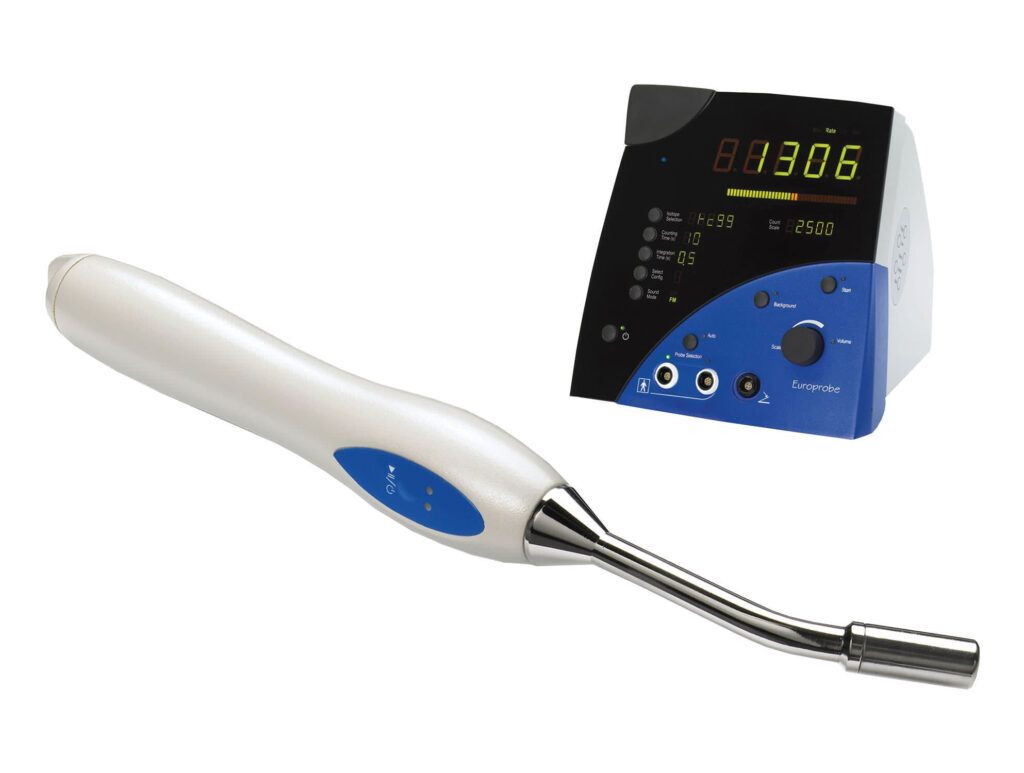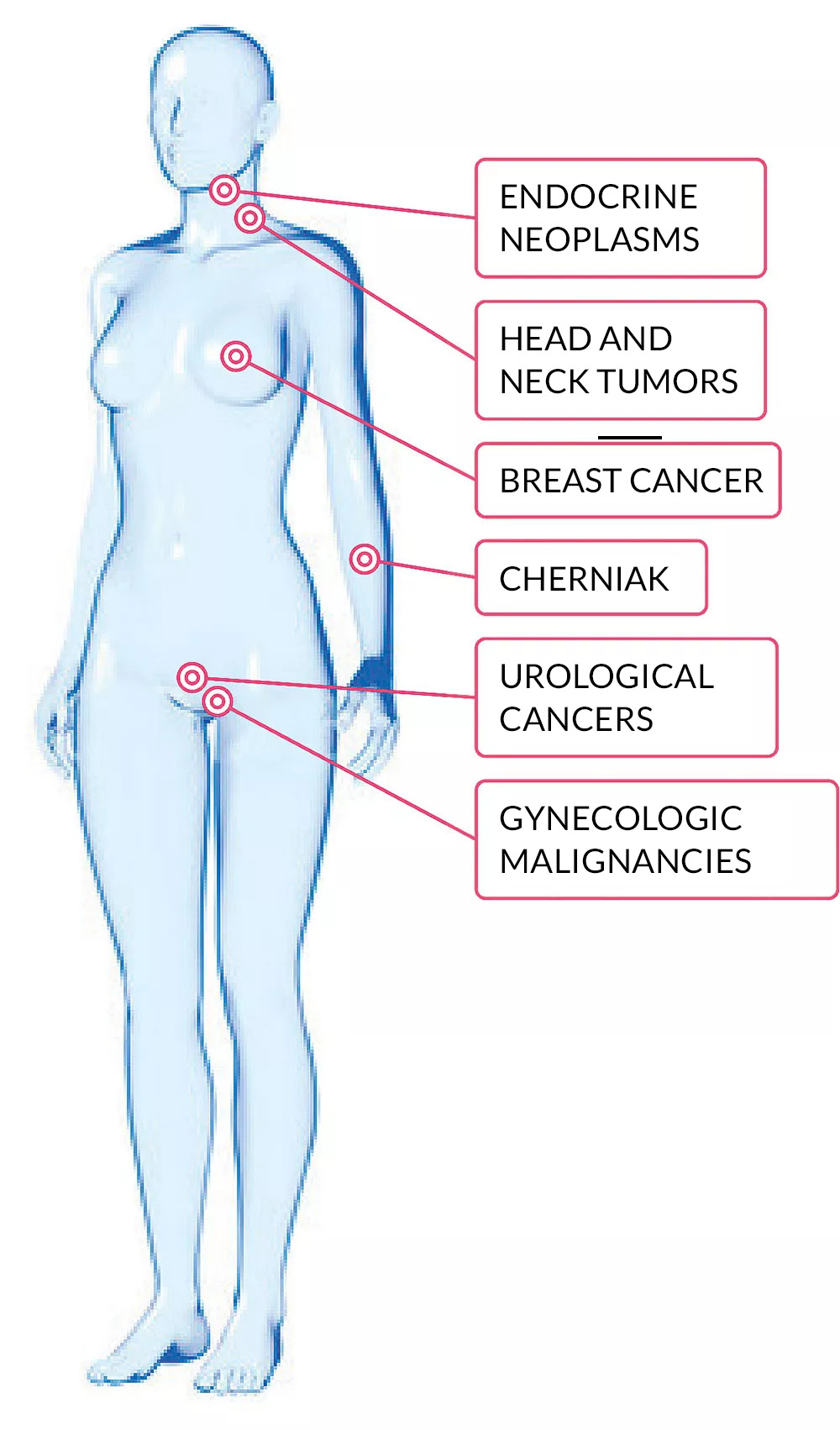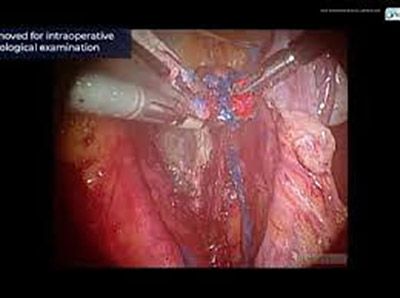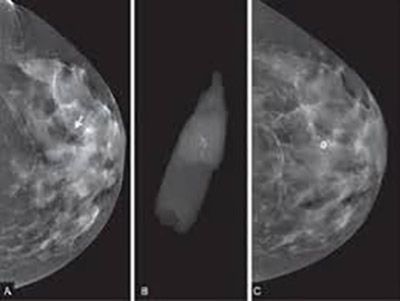Dual lymph node detection using gamma irradiation and/or fluorescence
With a single readout module and numerous gamma probe options, Europrobe 3.2 is a unique system that meets all perioperative detection needs, as well as percutaneous localisation in 7 major clinical areas.
A state-of-the-art device optimised for the detection of areas of high radionuclide uptake, fully meeting the broad requirements of surgeons and nuclear medicine practitioners.
Its versatile design allows detection of a wide range of isotopes, ensuring the probe can be used in many clinical procedures.


Clinical Application:
- Oncological surgery: Detection of sentinel lymph nodes in breast cancer
- Senology: technique of radioguided occult lesion localization (ROLL) / sentinel lymph node biopsy (SNOLL)
- Gynaecology: Laparoscopic sentinel lymph node detection in cervical and endometrial cancer. Detection of sentinel lymph nodes in vulvar cancer
- Otorhinolaryngology: Oral cavity, head and stroke
- Dermatology: Melanoma / osteosarcoma
- Endocrinology: Thyroid / parathyroid glands
- Nuclear medicine: Percutaneous detection / uptake monitoring
Bimodal detection
- A complete modular system, combining:
– Gamma ray detection
– Fluorescent dye detection - The optical-nuclear probe is the first method adapted to the detection of hybrid indicators
- Fluorescence tracing is carried out in a lit room.
- The Optical-Nuclear Probe is the only device in the world for detecting SNLs with fluorescence without the need for cumbersome imaging systems.
A unique probe system allows the gamma detector to be used in such procedures as:
- Sentinel lymph node detection – in open surgery
- Sentinel lymph node detection – in laparoscopic surgery
- Sentinel lymph node detection with simultaneous fluorescence detection
Probe types and specifications for the Europrobe 3.2 module
CDTE probes:
Cadmium telluride (CdTe ) probes are designed for the detection of lower energy radiation (i.e. I-125, Tc-99m, etc.) with excellent spatial resolution. These probes should be used for energy between 20 and 170 keV. Above 170 keV the detection efficiency will be much better with a CSI probe.
The detector and a high gain FET low noise preamplifier are mounted in an 11mm diameter probe (detection head).
The collimator is an integral part of the probe.
The operating temperature range is +10°C to + 40°C and ambient humidity should not exceed 75% at 40°C.

Isotopes:
- Tc 99m (140 keV),
- I 125 (27 KeV)
- I 111 ( 171 & 245 KeV)
- Energy range: 20 keV – 364keV ( optimum performance: 20 keV – 170 KeV)
Advantages:
- Operates at ambient temperature
- Low energy radiation detection
- Offers excellent resolution of energy measurement at 140 keV (99mTc)
- Small probes for detection in small incisions with high accuracy
- Available in Bluetooth wireless version
- Customised probes available
CSI probes:
Scintillation probes (CSI scintillator coupled to a silicon photodiode), operate without PMT and are most suitable for a higher energy range (In-111, I-131, etc.), up to photons of 1.0 MeV, but can also be used for Tc-99m detection if high sensitivity is required. The energy range for this probe varies from 100 keV to over 1 MeV.
The detector and high gain FET low noise preamplifier are mounted in a 16mm diameter probe (detector head).
The collimator is an integral part of the probe.
The operating temperature range is +10°C to + 40°C and ambient humidity should not exceed 75% at 40°C.

Isotopes:
- Tc 99m (140 keV),
- I 131 (364 keV),
- F 18 (using a special collimator, 511KeV),
- In 111 (171 & 245 keV)
- Energy range: 100 keV — 1 MeV (Optimum performance:: 140 keV—1 MeV)
Advantages:
- Operates at ambient temperature
- Detects high energy radiation
- Operates at a low initial voltage, unlike a PMT-based solution (typically 20V)
- Available in Bluetooth wireless version
- Customised probes available



